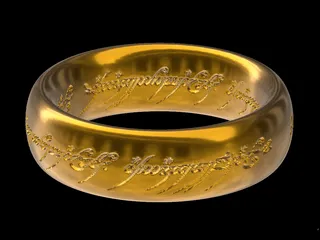Largest TNOs and their moons shapes scaled one in ten million
Description
PDFOriginally published here: Largest TNOs and their moons shapes scaled one in ten million by tato_713 - Thingiverse
This could looks like a lazy post. The idea of this was to make scaled models of the biggest Trans Neptune Objects that are not known for anything aside their diameters, scaled at the same scale of some of my other models. All models are just scaled spheres because most of them are probably hydrostatically relaxed. Pluto and Haumea have their own posts, and they are excluded from this one; Pluto because of being widely known after the New Horizons flyby, and Haumea because of its very elongated shape. The discovery of these minor planets promoted the 2006 planet reclassification, that finished the status of Pluto as a planet. The objects represented here are listed below in other sections, and they are sorted by the distance to the Sun (actually by their orbital period). The scale of the models is 1 in 10^7 or one in ten million, and one in twenty million for several of these.
The file's names explained:name_1_x_10_y.stl is 1 : x * 10^y. So _1_6_10_7 is 1:600000000 or one in 60 million.
90482 Orcus
Orcus is often called the "anti-Pluto" because it share a similar orbit (2:3 resonance with Neptune) but with the eccentricity in the opposite direction. When Pluto is at the aphelion, Orcus is at the perihelion.
- Type: TNO. Plutino. Binary.
- Orbit: Sun. Kuiper belt
- Orbital period: 247.29 yr.
- Rotational period: ?
- Composition: Icy body.
- Density: 1.53 g/cm3.
- Dimensions: 917 km.
- Model scale: 1:1x107 (9cm) 1:2x107 (4.5cm)
(90482 Orcus 1) Vanth
Similar to Charon with Pluto, Vanth is about a half of the diameter of its parent body, Orcus. Because of the low mass ratio parent-moon, the system can be considered a binary minor planet. The barycenter of the system is outside Orcus and both of them are probably tidal locked with each other.
- Type: Binary
- Orbit: Orcus
- Orbital period: 9.54 d.
- Composition: Icy body.
- Density: 1.5 g/cm3.
- Dimensions: 442.5 km.
- Model scale: 1:1x107 (4cm)
(307261) 2002 MS4
Like all the object in this post, 2002MS4 is listed as a possible dwarf planet. But bodies with less than 1000 km in diameter have dubious composition. If the surface is old and undisturbed, it means that it has never been heated enough to be differentiated and in hydrostatic equilibrium.
- Type: TNO. Qubewano
- Orbit: Sun. Kuiper belt
- Orbital period: 269.45 yr
- Rotational period: ?
- Composition: Icy body.
- Density: ? *Dimensions: 934 km.
- Model scale: 1:1x107 (9cm) 1:2x107 (4.5cm)
120347 Salacia
- Type: TNO. Qubewano.
- Orbit: Sun. Kuiper belt *Orbital period: 271.68 yr.
- Rotational period: 6 h 5 min
- Composition: Icy body.
- Density: 1.29 g/cm3.
- Dimensions: 854 km.
- Model scale: 1:1x107 (8.5cm) 1:2x107 (4cm)
(120347 Salacia 1) Actaea
- Type: Satellite.
- Orbit: Salacia.
- Orbital period: 5.5 d.
- Composition: Icy body.
- Density: 1.16 g/cm3.
- Dimensions: 303 km.
- Model scale: 1:1x107 (3cm)
50000 Quaoar
Quaoar was one of the first likely dwarf planet to be discovered. It is a good target for been explored since there were observed signs of cryovolcanism.*Type: TNO. Cubewano. *Orbit: Sun. Kuiper belt.
- Orbital period: 288.81 yr.
- Rotational period: 8 h 50 min
- Composition: Icy body.
- Density: 1.99 g/cm3.
- Dimensions: 1138 km x 1036 km.
- Model scale: 1:1x107 (11cm) 1:2x107 (5cm)
(50000 Quaoar 1) Weywot
- Type: Satellite
- Orbit: Quaoar.
- Orbital period: 12.438 d.
- Composition: Icy body.
- Density: ? g/cm3.
- Dimensions: 162 km.
- Model scale: 1:1x107 (1.6cm)
136472 Makemake
Makemake is one of the recognised dwarf planet. It is the biggest member of the Classical Kuiper Belt object or cubewanos (after the former QB1, now Albion). This group is composed by objects that are not scattered nor resonant. They have low eccentricity and inclination on they orbits.
- Type: Dwarf planet. TNO. Qubewano
- Orbit: Sun. Kuiper belt
- Orbital period: 307.53 yr.
- Rotational period: 22 h 50 min
- Composition: Icy body.
- Density: 1.4–3.2 g/cm3.
- Dimensions: 1434 km x 1420 km.
- Model scale: 1:1x107 (14cm) 1:2x107 (7cm)
(136472 Makemake 1) "MK2"
It is the only known moon of Makemake.
- Type: Satellite
- Orbit: Makemake
- Orbital period: 12.4 d.
- Composition: Icy body.
- Density: ? g/cm3.
- Dimensions: 175 km.
- Model scale: 1:1x107 (2cm)
174567 Varda
Varda and its only known moon Ilmarë were named after characters of J. R. R. Tolkien's literature.
- Type: TNO. Qubewano
- Orbit: Sun. Kuiper belt
- Orbital period: 313.12 yr.
- Rotational period: 5 h 36 min 36 s
- Composition: Icy body.
- Density: 1.24 g/cm3.
- Dimensions: 790 km x 723 km.
- Model scale: 1:1x107 (8cm) 1:2x107 (4cm)
(174567 Varda 1) Ilmarë
- Type: Satellite
- Orbit: Varda
- Orbital period: 5.75 d.
- Composition: Icy body.
- Density: 1.24 g/cm3.
- Dimensions: 350 km.
- Model scale: 1:1x107 (3.5cm)
225088 Gonggong
Gonggong is likely a dwarf planet, even with the lowest estimations of size. It is classified both as a Scattered Disk Object and a resonant TNO because of a 3:10 resonance with Neptune. Like many TNOs it has at least one satellite, which is too small to be included in this list.
- Type: TNO. SDO
- Orbit: Sun. Scattered Disk.
- Orbital period: 553.05 yr.
- Rotational period: 22 h 24 min
- Composition: Icy body.
- Density: 1.72 g/cm3.
- Dimensions: 1230 km.
- Model scale: 1:1x107 (12cm) 1:2x107 (6cm)
136199 Eris
Eris is one of the firsts recognised dwarf planets. It is the most massive body in the Solar System that is not a planet, a moon or an star, slightly more massive but smaller than Pluto. It is the biggest object of a group named Scattered Disk, a disk of minor planets scattered by interactions with the outer planets. Eris is also one of the most distant observable objects, because its big size and high albedo (whiteness), and the biggest object known in the Solar System yet not visited by an spacecraft.
- Type: Dwarf planet. TNO. SDO.
- Orbit: Sun. Scattered Disk.
- Orbital period: 558.04 yr.
- Rotational period: 25 h 22 min
- Composition: Icy body.
- Density: 2.52 g/cm3.
- Dimensions: 2326 km.
- Model scale: 1:1x107 (23cm) 1:2x107 (12cm)
(136199 Eris 1) Dysnomia
It is the moon of Eris. Like Charon with Pluto, Dysnomia is quiet big compared with its parent body.
- Type: Satellite
- Orbit: Eris.
- Orbital period: 15.774 d.
- Composition: Icy body.
- Density: ? g/cm3.
- Dimensions: 700 km.
- Model scale: 1:1x107 (7cm) 1:2x107 (3.5cm)
90377 Sedna
Sedna is the prototype and the biggest member of a type of minor planet named sednoids. It is also the biggest object orbiting around the sun without moon known yet. The sednoids have very elongated non resonant orbit, with a high perihelion. It has been theorized that they are scattered by an unknown object sized between Earth and Neptune, nicknamed "Planet Nine". If this object exist it would be a planet and it must have a large eccentric orbit, which would make it nearly impossible to detect.
- Type: TNO. Sednoid.
- Orbit: Sun.
- Orbital period: 11400 yr.
- Rotational period: 10 h 16 min
- Composition: Icy body.
- Density: ? g/cm3.
- Dimensions: 995 km.
- Model scale: 1:1x107 (10cm) 1:2x107 (5cm)
Other astronomical objects
Tags
Model origin
The author marked this model as their own original creation. Imported from Thingiverse.




